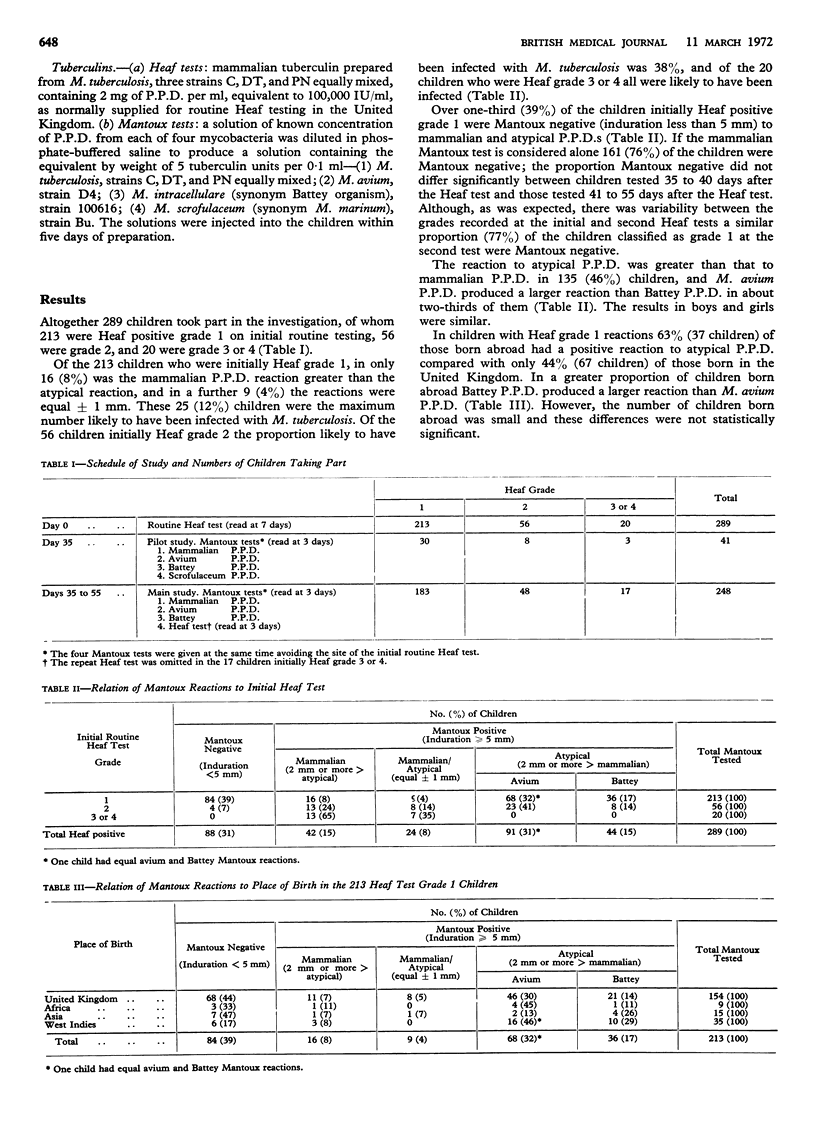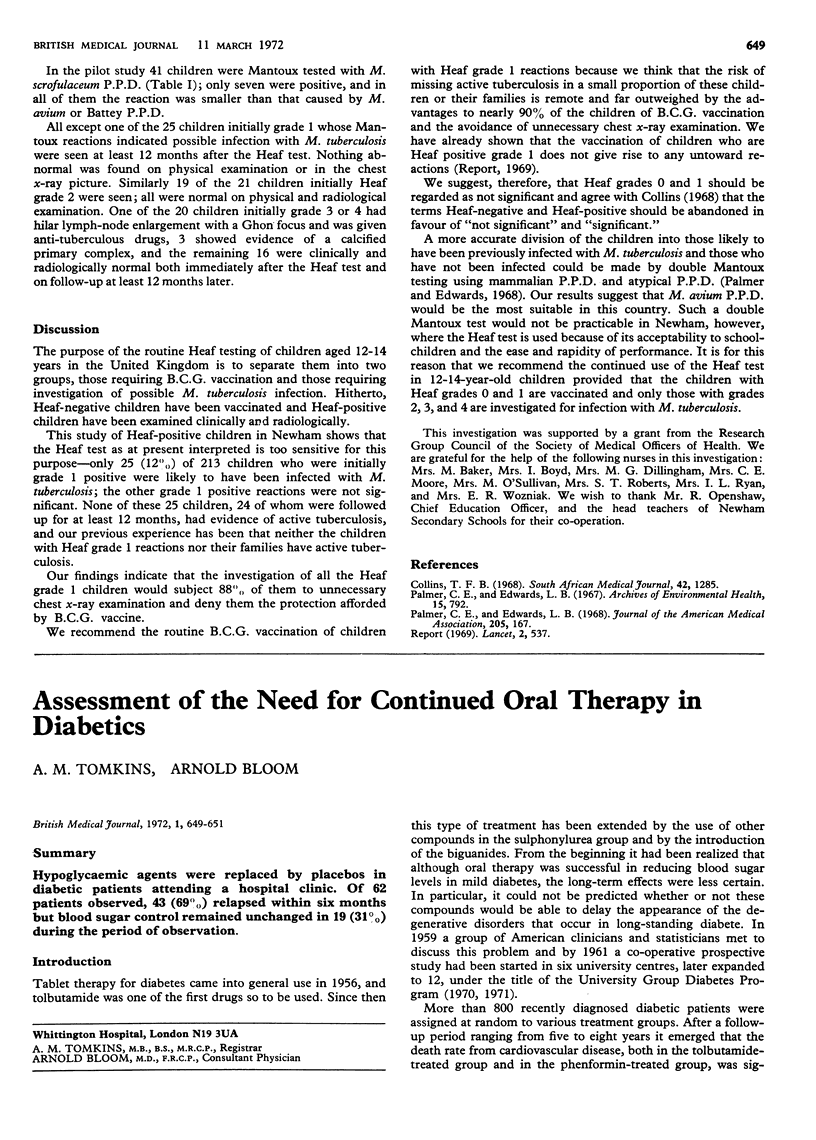Abstract
A study of 289 children aged 12-14 years found to be Heaf test positive at routine testing was made to determine the likely cause of the positive tests. Only 12% of children grade 1 Heaf positive were likely to have had a previous infection with Mycobacterium tuberculosis, 49% were likely to have had infections with atypical mycobacteria, and in 39% no cause for the positive Heaf test was found.
The positive Heaf test seems to us to be too sensitive. Both a negative and grade 1 positive should be regarded as not significant and these children given B.C.G. vaccine. Heaf grades 2, 3, and 4 should be regarded as significant and the children investigated for M. tuberculosis infection.
Full text
PDF


Selected References
These references are in PubMed. This may not be the complete list of references from this article.
- Palmer C. E., Edwards L. B. Identifying the tuberculous infected. The dual-test technique. JAMA. 1968 Jul 15;205(3):167–169. [PubMed] [Google Scholar]
- Palmer C. E., Edwards L. B. Tuberculin test in retrospect and prospect. Arch Environ Health. 1967 Dec;15(6):792–808. doi: 10.1080/00039896.1967.10664998. [DOI] [PubMed] [Google Scholar]


